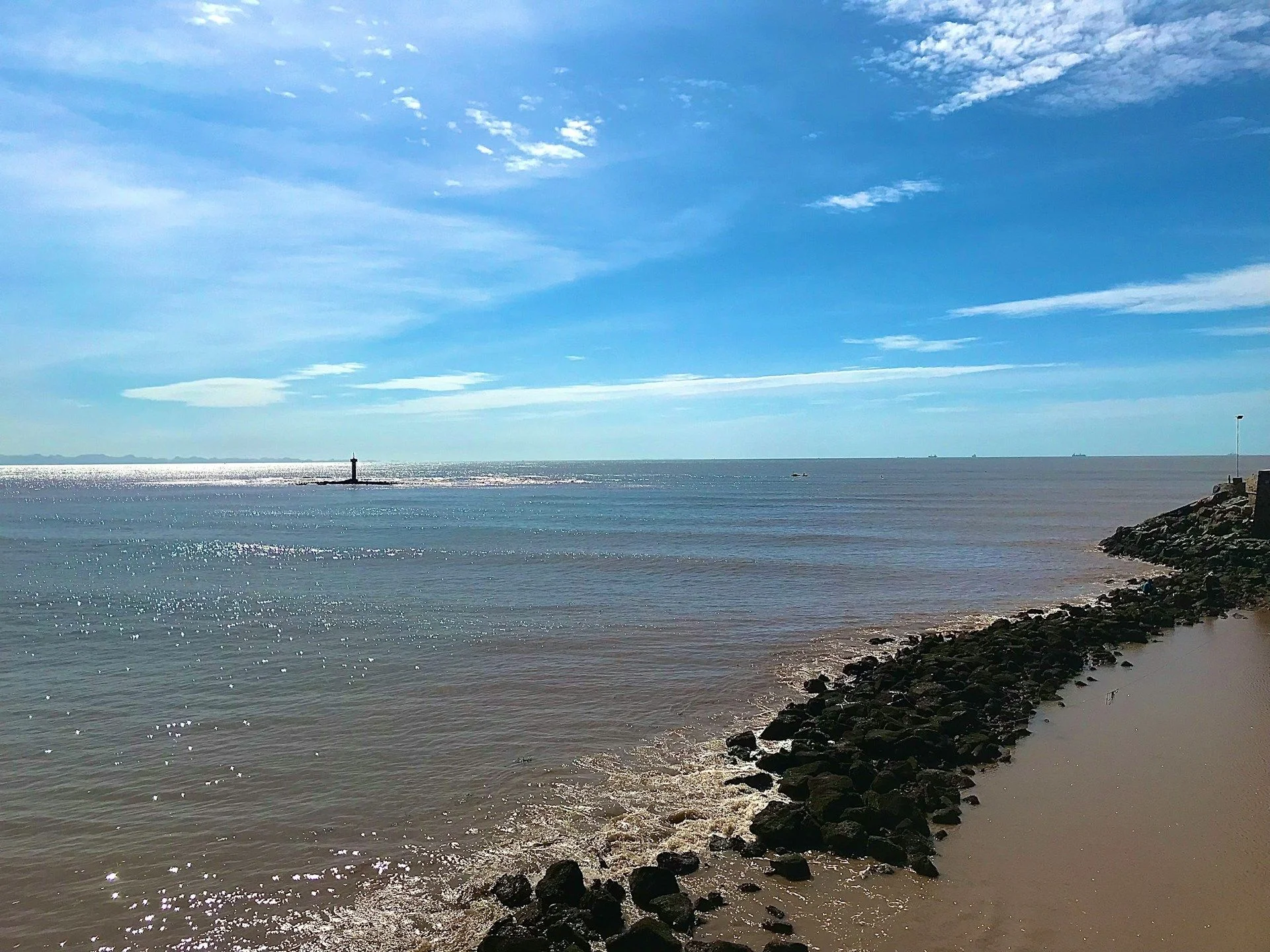Advantages of traveling
to Vietnam
Maritime Heritage Hub
Explore Haiphong’s historic port district with guided harbor walks, visit the Vietnam National Maritime Museum, witness traditional boat-building villages along the Lach Huyen Canal, and learn about the city’s centuries-old trading routes on expert-led shore excursions.
Island & Beach Escapes
Board speedboats to the nearby Cat Ba and Tuan Chau archipelagos, snorkel among coral gardens, lounge on white-sand beaches at Monkey Island, and stay overnight at eco-resorts on Co To Island—ideal for combining coastal relaxation with biodiverse marine exploration.
Urban Green Retreats
Stroll through central parks like Tam Bac and Nguyen Van Troi, cycle along landscaped river promenades, picnic beneath century-old banyan trees in Victory Square, and discover hidden botanical gardens and lakesides within the city’s rapidly modernizing skyline.
Maritime Heritage Hub
Explore Haiphong’s historic port district with guided harbor walks, visit the Vietnam National Maritime Museum, witness traditional boat-building villages along the Lach Huyen Canal, and learn about the city’s centuries-old trading routes on expert-led shore excursions.
Island & Beach Escapes
Board speedboats to the nearby Cat Ba and Tuan Chau archipelagos, snorkel among coral gardens, lounge on white-sand beaches at Monkey Island, and stay overnight at eco-resorts on Co To Island—ideal for combining coastal relaxation with biodiverse marine exploration.
Urban Green Retreats
Stroll through central parks like Tam Bac and Nguyen Van Troi, cycle along landscaped river promenades, picnic beneath century-old banyan trees in Victory Square, and discover hidden botanical gardens and lakesides within the city’s rapidly modernizing skyline.

Useful articles
and recommendations from experts
Tourism in Haiphong: Explore the Best Experiences
Haiphong, Vietnam’s third-largest city and its northern maritime gateway, is rapidly emerging as a multifaceted destination offering a blend of coastal tranquility, colonial-era architecture, and dynamic urban life. Tourism in Haiphong goes beyond a simple stopover before Halong Bay: it encompasses riverfront promenades, island escapes, and a burgeoning cultural scene. The city is strategically located at the mouth of the Cam and Lach Tray rivers, providing efficient road and rail connections to Hanoi (approximately 120 km west) and direct ferry links to Cat Ba Island and Tuan Chau. Travel experiences in Haiphong range from early-morning market tours where local fishers sell their catches, to late-night street-food crawls sampling iconic northern specialties. Whether you seek active marine-based adventures, peaceful green retreats within city limits, or immersive insights into Vietnam’s maritime heritage, how to visit Haiphong means discovering a destination that seamlessly weaves history, nature, and modern comfort. This guide presents the best tours in Haiphong, practical logistics, insider tips on timing and transport, seasonal considerations, and sample itineraries designed to help you craft an unforgettable northern Vietnam coastal journey.
Why Haiphong is Attractive for Travelers
Haiphong’s appeal lies in its authentic, off-the-beaten-path character combined with emerging resort-style amenities. As Vietnam’s principal northern seaport, the city boasts a legacy of maritime trade dating back to the 16th century, visible in its wide boulevards, French colonial villas, and the venerable Opera House modeled after those in Bordeaux. The city’s riverine geography and coastal islands deliver unmatched opportunities for scenic cruises through mangrove-lined waterways and sunrise paddling beneath stilt-house fishing villages. Urban green spaces—such as Tam Bac Park with its lotus-filled lake and Victory Square’s banyans—offer tranquil respites amid urban bustle. Local cuisine reflects a coastal bounty: crystalline-broth crab noodle soup (Bún riêu cua), grilled squid skewers with dipping sauce, and freshly shucked oysters from Do Son Peninsula. Nearby, the protected Cat Ba archipelago provides UNESCO-recognized limestone karsts and biodiverse marine habitats, while off-hour visits to Tuan Chau’s theme-park-style island ensure uncrowded beaches and live-music evenings under the stars. Together, these elements explain why tourism in Haiphong resonates with culture seekers, nature enthusiasts, and culinary adventurers alike.
Main Types of Tourism in Haiphong
Haiphong supports a spectrum of tourism styles tailored to diverse visitor interests:
- Maritime & Heritage Tourism: Guided harbor tours explore Haiphong’s historic docks, shipyards, and the Vietnam National Maritime Museum. Shore-side heritage walks in the old French Quarter include the Opera House, St. Joseph’s Cathedral, and colonial villas now housing art galleries.
- Island & Beach Tourism: Day-boat and overnight cruise options to Cat Ba Island, Tuan Chau, and Co To Island offer snorkeling, diving certification courses, dolphin-watching, and beach-combing on pristine sands, combined with homestay-style eco-resorts.
- Urban Green & Leisure Tourism: The city’s parks—Tam Bac, Nguyen Van Troi, and May 10 public garden—feature walking trails, boating lakes, and fitness zones. Guided bicycle tours along the Cam River waterfront and floral promenades connect green oases and street-food stops.
- Culinary & Market Tourism: Morning tours of Rung market introduce visitors to northern specialties—fish cakes, freshwater eel porridge, and rice vermicelli—while evening excursions through Do Son seafood stalls and central night markets spotlight grilled shellfish and banh gio rice dumplings.
- Adventure & Eco-Tourism: Beyond the city, the Cat Ba archipelago’s Lan Ha Bay offers kayaking through karst caves and trekking in Cat Ba National Park for endemic langur sightings. Eco-farms on Vinh Ngoc Peninsula provide orchard-to-table experiences and traditional clam harvesting.
- Wellness & Retreat Tourism: Luxury riverside spas deliver Vietnamese herbal treatments, hot-stone massages with gulf views, and yoga at dawn on sandbars. Boutique hotels in the Truong Chinh district blend wellness programming with local art installations.
By selecting the best tours in Haiphong across these categories, travelers can assemble personalized itineraries combining relaxation, discovery, and cultural immersion.
Unique Attractions and Experiences
For travelers seeking unique experiences in Haiphong, several off-beat highlights await. Start with a sunrise motor-boat tour through the Vinh Quang mangroves, where egrets, kingfishers, and fiddler crabs populate the rising tide. Visit Yêu Sơn Island, a sacred pagoda site accessible only by small skiff, and partake in lantern-lighting ceremonies at dusk. Explore the under-visited Nam Trieu fishing village, where traditional nets are cast from bamboo rafts, and sample the region’s renowned clam porridge directly on the sand. Artisans at the Bat Trang-style pottery workshops near Du Hang Pagoda demonstrate centuries-old ceramic glazing techniques. In the nearby Do Son Hills, guided mountain-bike trails wind past French-era coastal forts and wartime bunkers, culminating in panoramic lookout points over the Gulf of Tonkin. Each of these best tours in Haiphong immerses visitors in local culture, biodiversity, and living history that lie beyond well-trodden paths.
Practical Tips for Travelers
To ensure seamless travel experiences in Haiphong, keep these insider tips in mind:
- Visas & Entry: International visitors often transit through Hanoi’s Noi Bai Airport—complete e-Visa procedures online ahead of time, or utilize visa-exemption eligibility if available. Private car or shuttle transfers from Hanoi take approximately 2.5 hours via the Noi Bai–Haiphong Expressway.
- Transport: Within the city, ride-hail apps (Grab, Be) offer motorbike taxis (xe ôm) and cars. For island access, ferries depart from Ben Binh and Do Son piers; speedboats serve Cat Ba and Tuan Chau year-round. Pre-booking is recommended during holiday weekends.
- Currency & Payments: The Vietnamese dong (VND) is used; ATMs and currency-exchange counters are plentiful in central districts. Credit cards work in major hotels and restaurants, but carry cash for markets, street stalls, and inter-island boat fares.
- Health & Safety: Tap water is not potable—use bottled water. Insect repellent is advised for mangrove and jungle excursions. Standard precautions apply when exploring caves or high-tide fish farms—wear closed-toe shoes and heed guide instructions.
- Etiquette: Remove shoes before entering pagodas and private homes; greet with a slight nod or “Xin chào.” When visiting working fish-sauce or clam farms, request permission before photography. A small tip for guides and boat crews is appreciated but not mandatory.
Seasonal Demand and Visitor Flows
Haiphong’s humid subtropical climate and regional festivals create distinct travel windows for best tours in Haiphong. Spring (March–May): Temperatures range 20–28 °C with blooming bougainvillea along boulevards—ideal for urban and riverside exploration. Summer (June–August): High heat and humidity accompany off-peak discounts on hotels; early-morning island trips avoid afternoon downpours. Autumn (September–November): Cooler breezes and clear skies signal peak festival season: the Haiphong Do Son Buffalo Fighting Festival in September draws domestic visitors to traditional contests and carnival rides. Winter (December–February): Cooler 15–22 °C days and occasional light mists over the bay provide perfect conditions for hiking in Cat Ba and intimate museum visits. Major holidays such as Tet (Lunar New Year) trigger high domestic traffic—book transport and accommodation three months in advance. Aligning your itinerary with these seasonal patterns ensures optimal weather, crowd levels, and pricing.
Travel Planning Recommendations
To craft a concise Haiphong-centered itinerary, integrate these day-by-day recommendations:
- Day 1 (Urban Arrival & Riverside): Arrive via Noi Bai Expressway or train station. Check in at a riverside hotel in Le Chan district. Stroll the Tam Bac Bridge and Tam Bac Park at sunset, followed by grilled squid and beer at the central night market.
- Day 2 (Maritime Heritage & Museum): Morning guided walk through the old port – Opera House, Central Post Office, and French villas. Afternoon visit to the Maritime Museum, then sample traditional fish-sauce tasting in Du Hang Pagoda district.
- Day 3 (Island Excursion): Full-day speedboat tour to Cat Ba Island – snorkeling at Viet Hai Bay, kayak through limestone caves, lunch at a village homestay. Return for riverside dinner on Tien Yen street.
- Day 4 (Adventure & Eco): Day-trip to Co To Island – cycling to Bai Nhem beach, fishing with local crews, and sunset atop Co To lighthouse. Alternatively, canyoning at Yang Bay Waterfall Park in the countryside.
- Day 5 (Cultural Villages & Farewell): Morning tour of Ham Ninh clam farms and fish-sauce workshops. Afternoon pepper-farm visit in Vinh Bao. Evening farewell cruise on the Lach Tray River with local folk music performance.

